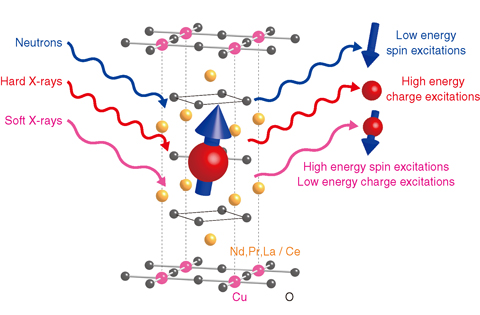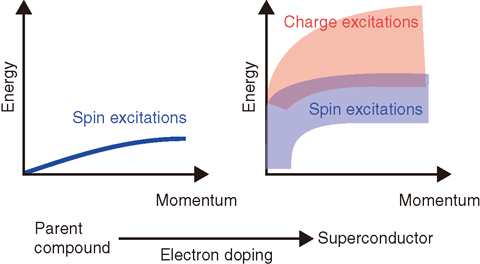
Fig.5-13 Role of quantum beams for measuring electron dynamics

Fig.5-14 Schematic of the experimental results
Superconducting cuprates have the highest transition temperature of superconductivity found so far, and they have attracted great interest since their discovery more than a quarter century ago. The parent compound of superconducting cuprates is an antiferromagnetic insulator, where the up and down spins of an electron align alternatively. Superconductivity occurs when either electrons or holes are doped to the parent compound as mobile charge carriers. Therefore, doping evolution of spin and charge excitations should be clarified for a definitive understanding of the electron dynamics in cuprates, and the differences or similarities between electron- and hole-doped compounds have been a central issue in the study of superconducting cuprates.
As shown in Fig.5-13, we utilized three quantum beams (neutrons at J-PARC, soft X-rays at the ESRF, and hard X-rays at SPring-8) for inelastic scattering experiments in this study. We observed spin and charge excitations in a wide energy-momentum space and comprehensively clarified the electron dynamics of the electron-doped superconducting cuprate (Nd,Pr,La)2-xCexCuO4. Fig.5-14 shows the experimental result schematically. In the parent compound, spin excitations with sinusoidal dispersion were observed and ascribed to the spin-wave in the antiferromagnetic insulator. Charge excitations were missing because the material possesses insulating character. When electrons were doped, the spin excitations shifted to higher energy and their peak width broadened. Such doping evolution of the spin excitations exhibited a striking contrast to the hole-doped cuprates, where the spectral distribution of the spin excitations also broadened but kept its energy position almost unchanged upon doping. Furthermore, in the electron-doped compound, we found charge excitations above the spin excitations. The charge excitations had been theoretically predicted, and the spectral weights of the spin and charge excitations partially overlapped with each other in the same energy region. The high-energy shift of the spin excitations and their mixture with the charge excitations indicate that the electron dynamics of the electron-doped cuprates had a highly itinerant character.
These findings impose constraints on theoretical models, and an adequate description of electronic excitations in electron- and hole-doped cuprates is a prerequisite for the complete understanding of the superconductivity. Incidentally, our work is the first to demonstrate that the complementary use of X-rays and neutrons is very effective in inelastic scattering for studying electron dynamics.